Canasta
Canasta is a card game of the Rummy family which originated in Uruguay probably about 1947.
Canasta is a card game of the Rummy family which is believed to have been invented in the old Jockey Club of Montevideo, Uruguay, in 1947. By 1948 it was exceedingly popular in the fashionable clubs of Argentina and from there it spread to the rest of South America. In 1949 it was introduced into the USA where it quickly became the most popular card game before being knocked off the top place by contract bridge. The word “Canasta” is Spanish, meaning “basket”.
Canasta is best played by four players forming two partnerships using two identical decks each of 52 cards plus two jokers (which are wild cards, hence they sometimes carrying the legend ‘wild’ rather than ‘joker’ in Canasta decks), totalling 108 cards. It is for this reason that manufacturers commenced adding two jokers to packs of playing cards, rather than just one, in around 1950. Unusually, only two suits are recognised in Canasta - red and black, and different denominations of cards score differently. This has led to the production of custom Canasta cards, without suit signs, and ordinary decks with scores printed on the cards. Custom dual decks of cards, not dissimilar to those produced for bridge, but with the same back-design and colour have also been marketed by among others the US Playing Card Company, Waddington’s, De La Rue and Piatnik.
A number of patent applications relating to Canasta began to appear after 1949. These include table covers for Canasta games (1949), simplified card decks for Canasta (1953) and shuffling devices (1953).
Many images are clickable 
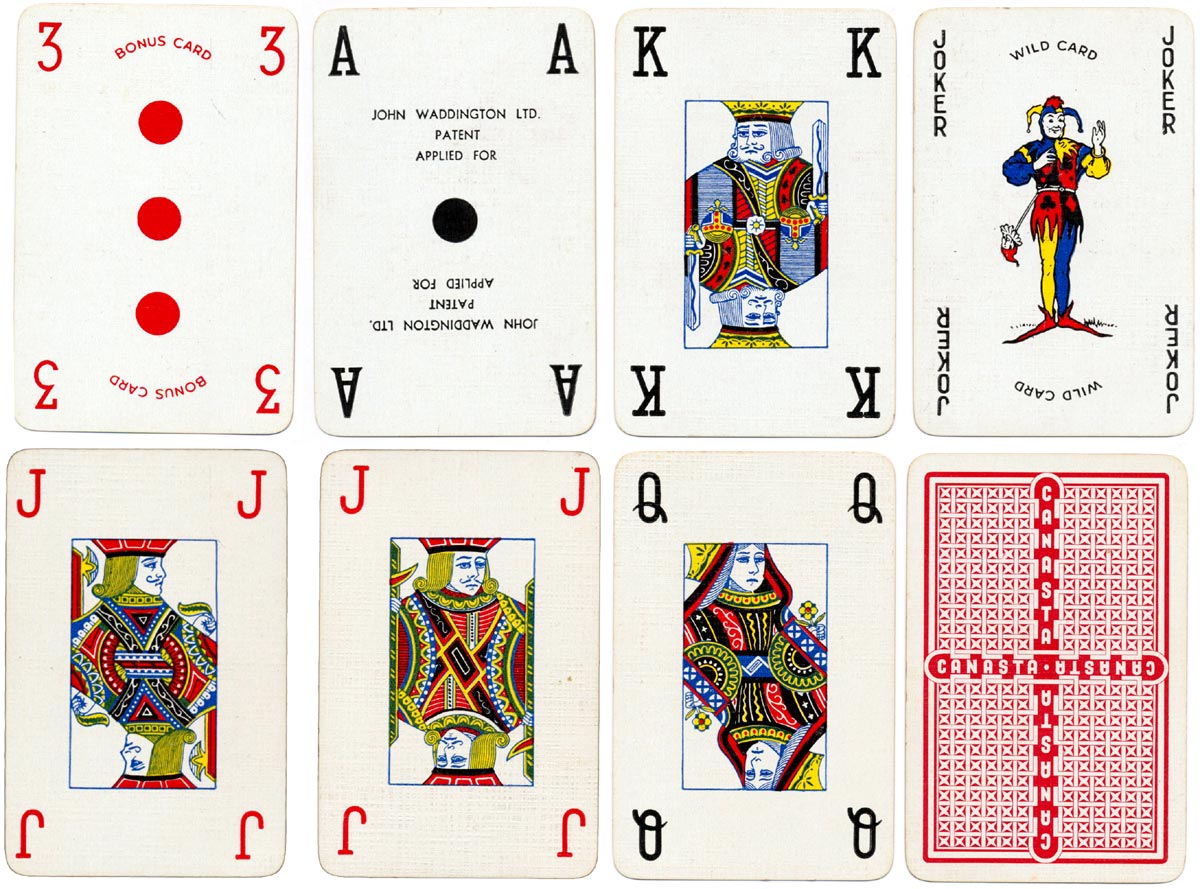
Above: Waddington’s “Real Canasta” custom playing cards without suit signs but no point values printed on the cards, 1952.
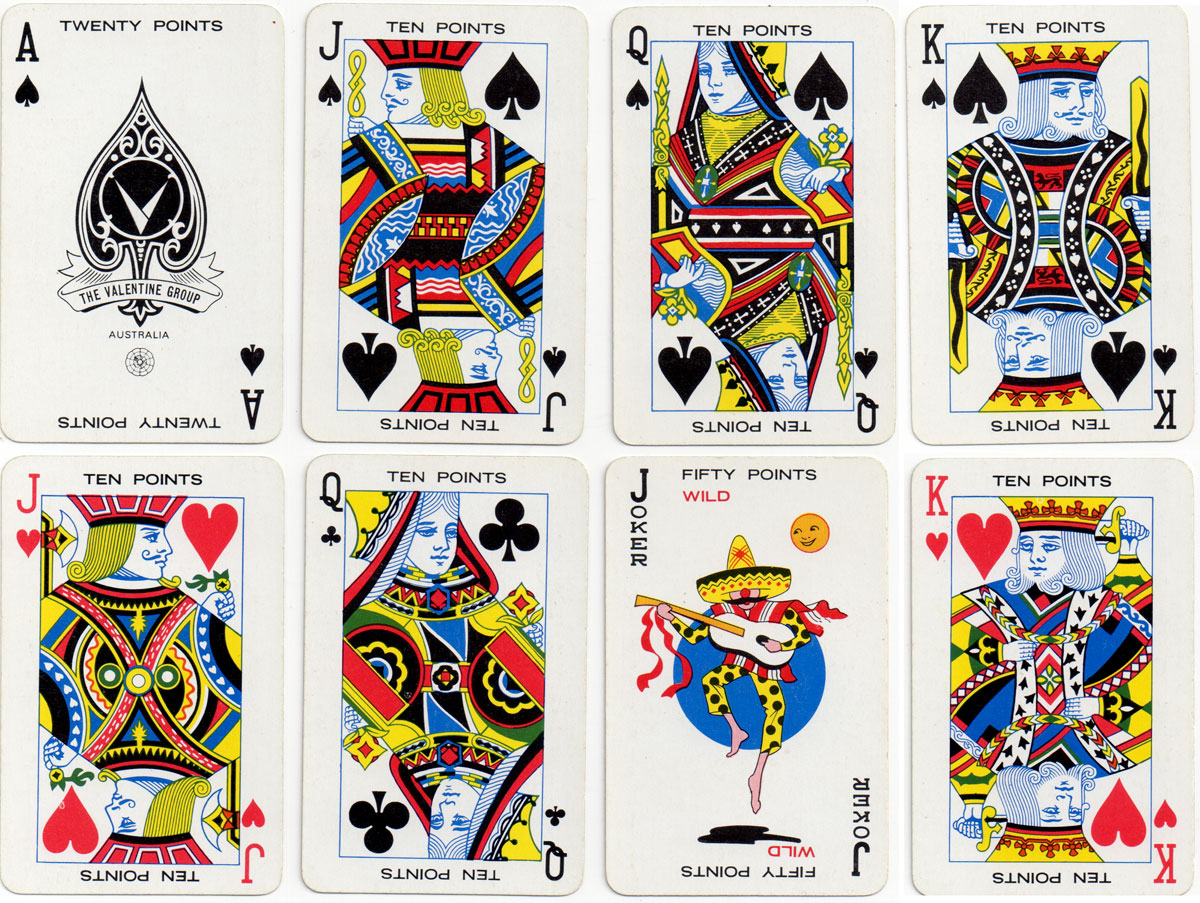
Above: Canasta cards manufactured in Australia by the Valentine Group with a Mexican style Joker and value points marked on the cards. Image courtesy Ken Lodge.
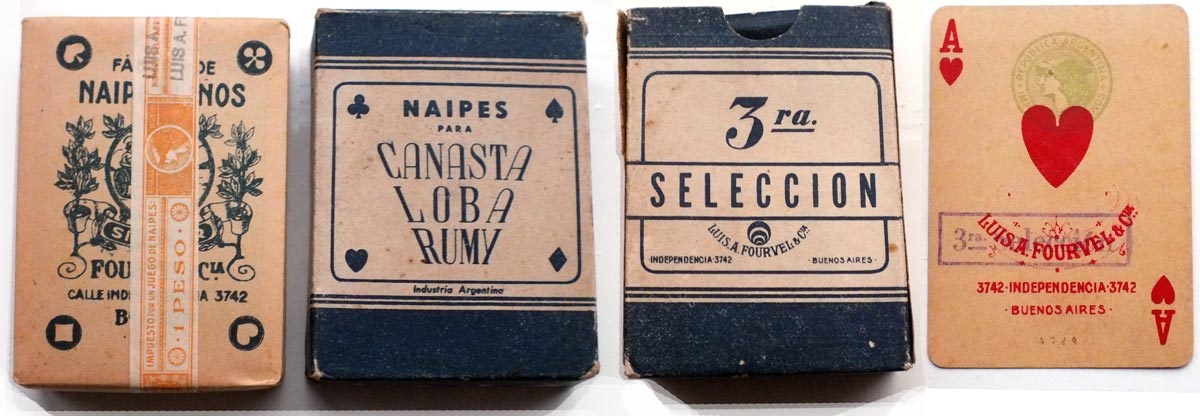
Above 3rd grade quality Naipes Side Car manufactured by Luis A. Fourvel y Cía, Buenos Aires, c.1948, with a reference to ‘Canasta’ on the box.
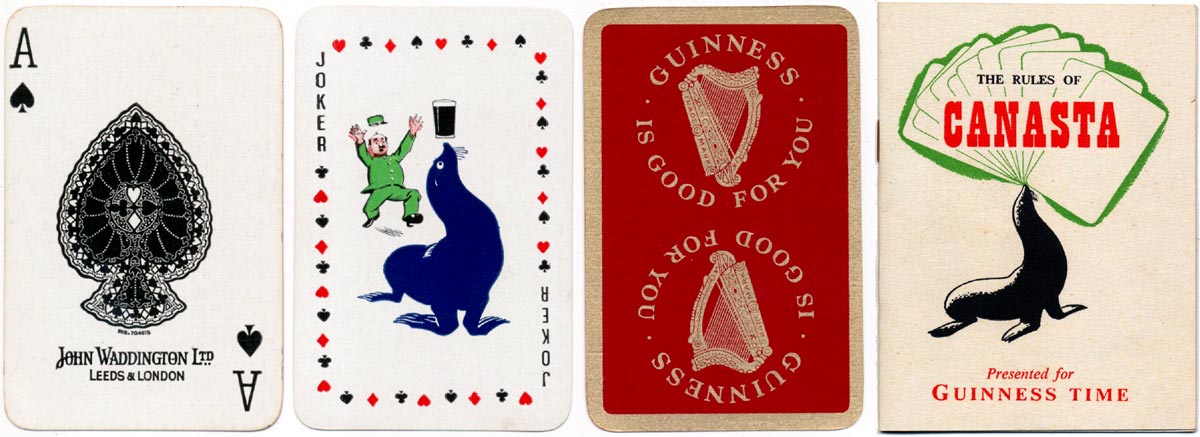
Above Guinness promotion Canasta set by Waddingtons, c.1951. The standard Canasta set has been rebadged for Guinness - the rules booklet has a different cover but is the same inside (click image to zoom).
Variations of Canasta include three-deck Canasta, using three identical decks of 52 cards plus six jokers and Samba which also uses three decks and six jokers.
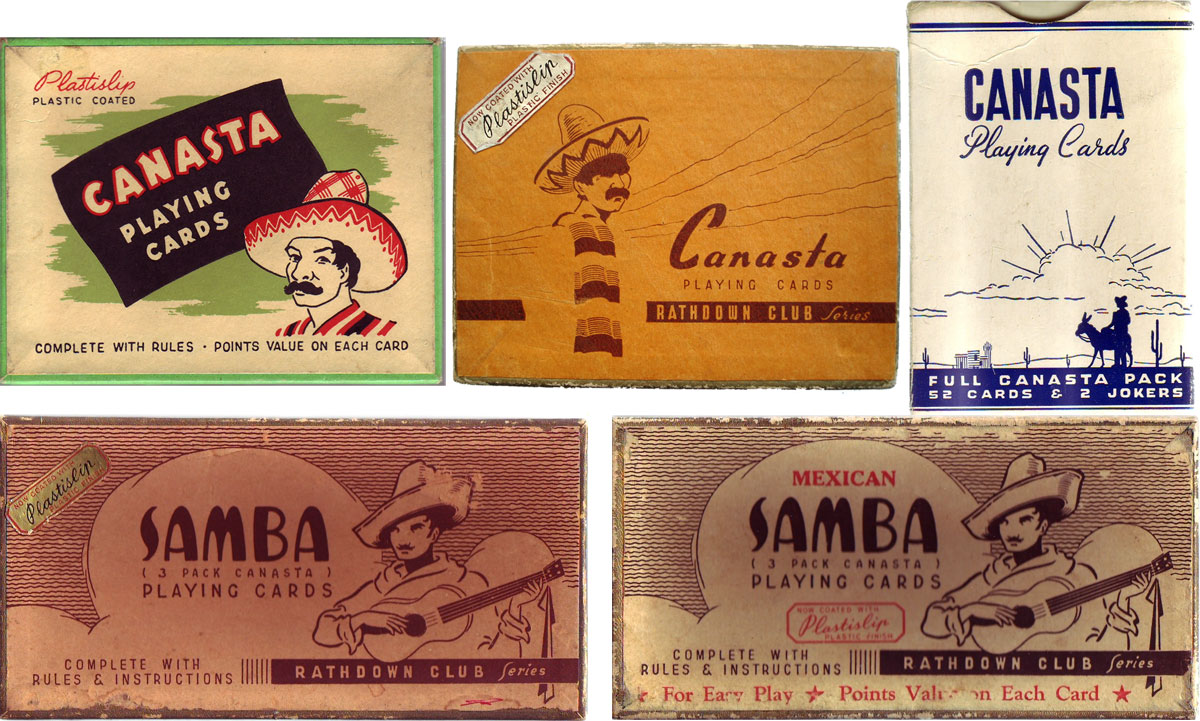
Above: assorted boxes for ‘Canasta’ and ‘Samba’, another variation on the Canasta theme, with romantic touristic Mexican imagery, produced in Australia by Hudson Industries Pty Ltd.
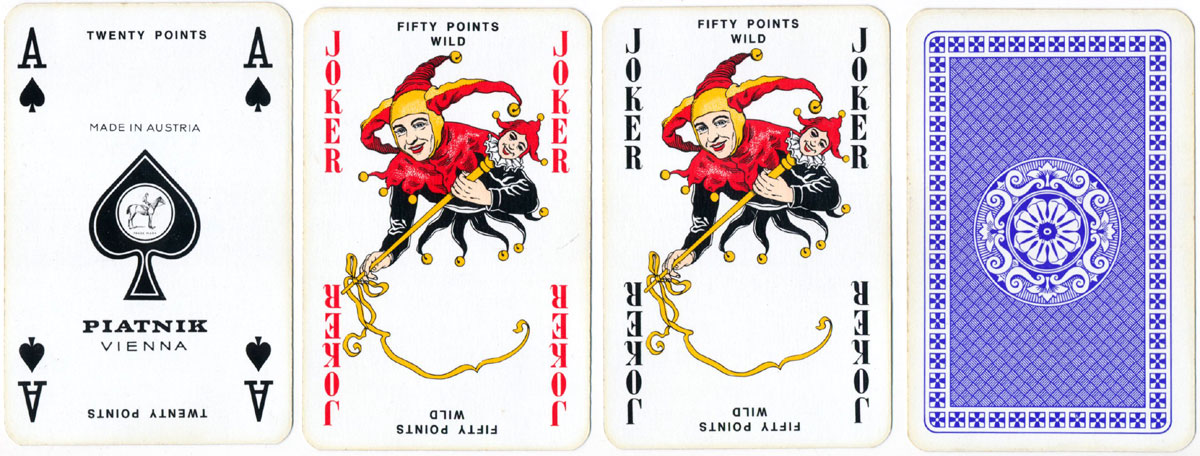
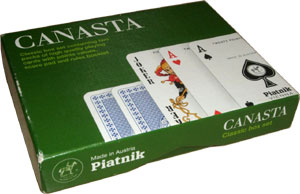
Above: box from Piatnik “Canasta” set, 1990s or later.
Above: Canasta No.2302 set manufactured in Austria by Piatnik with value points marked on the cards, c.1990.
The German company Bielefelder Spielkarten GmbH issued a booklet of rules in English but illustrated with North German (Berliner) pattern cards. Undated but probably from about 1960.
Acknowledgements: thanks to Matt Probert and Roddy Somerville for research and images (unless noted otherwise) and to Cristina Lia Broquen for notes about the Uruguayan origin of the game Canasta.
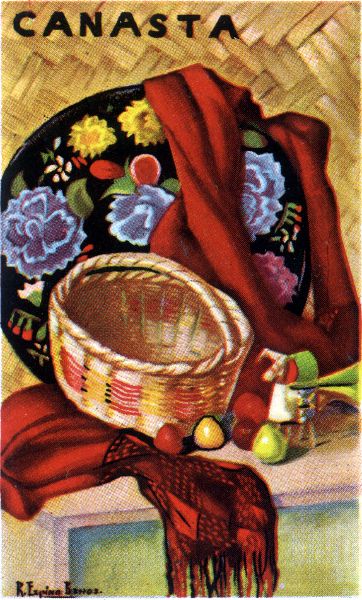
Above: painting by Ramón Espino Barros (1918-2000) on the reverse of a double Canasta set printed by Clemente Jacques y Cia., S.A., Mexico, c.1950
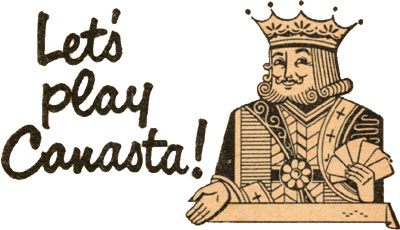
Above: USPCC Congress “Canasta” leaflet, c.1950.
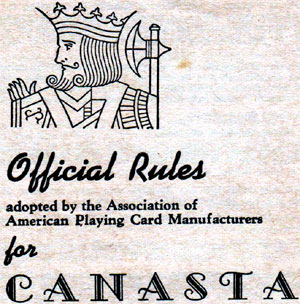
Above: “Canasta” leaflet, c.1951.
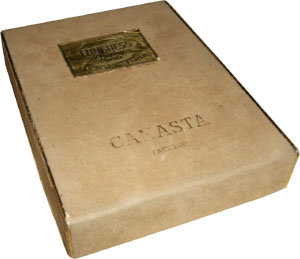
Above: USPCC Congress “Canasta” set, 1950. The set comprises two identical decks, both with two jokers, plus a rules leaflet. The cards are gilt edged and of super smooth feel and quality.
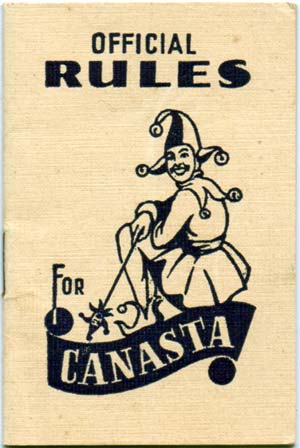
Above: Official Rules booklet for “Canasta” arranged by Albert H. Morehead, printed by Alf Cooke Ltd, Leeds & London [no date].
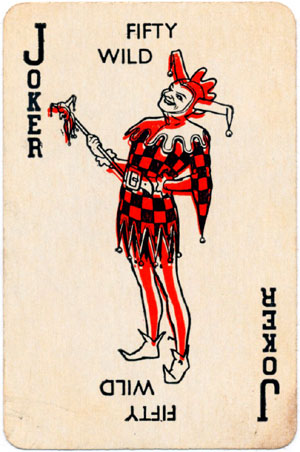
Above: Canasta Joker by Strong & Ready Ltd, Auckland, New Zealand.

Above: Waddington’s “Canasta” set containing the official rules booklet and a Canasta Tray, c.1950.
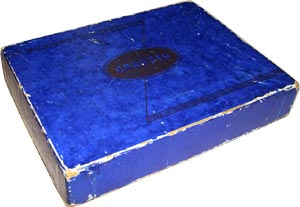
Above: Waddington's “Canasta” set with a rules booklet (a code on the rear page suggests 1950, others dated 1951) and a slip offering a help service by the Canasta Rules Committee.
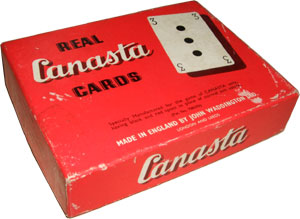
Above: Waddington’s “Real Canasta” set, patented by Cobianchi in February 1951, the patent being granted in January 1952, also includes an official rules booklet and score sheet, 1952.
See a much later Waddingtons set dated 1984►

Above: early De La Rue set, marked “Sixth Edition”.
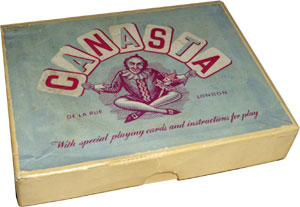
Above: De la Rue boxed “Canasta” set, c.1950.
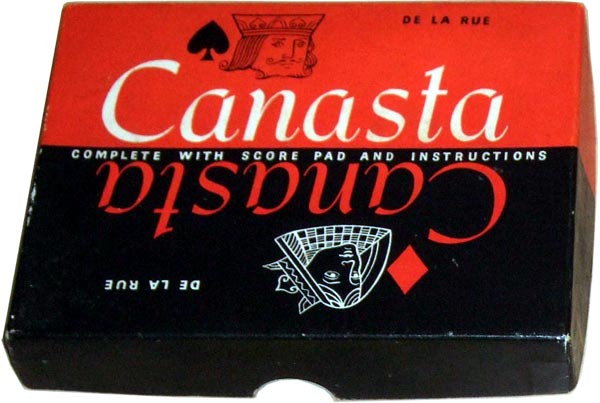
Above: De la Rue boxed “Canasta” set, c.1962.

By Simon Wintle
Member since February 01, 1996
Founder and editor of the World of Playing Cards since 1996. He is a former committee member of the IPCS and was graphics editor of The Playing-Card journal for many years. He has lived at various times in Chile, England and Wales and is currently living in Extremadura, Spain. Simon's first limited edition pack of playing cards was a replica of a seventeenth century traditional English pack, which he produced from woodblocks and stencils.
Related Articles

Agatha Christie and card games
Agatha Christie uses card-play as a primary focus of a story, and as a way of creating plots and mot...

Rouen Pattern - Portrait Rouennais
An attractive XV century French-suited design from Rouen became the standard English & Anglo-America...

Ganjifa - Playing Cards from India
Indian playing cards, known as Ganjifa, feature intricate designs with twelve suits and are traditio...

The Henry Hart Puzzle
Explore the intricate history and unique design variations of Henry Hart's playing cards, tracing th...

Sevilla 1647 reproduction
Facsimile of Spanish-suited pack produced in Sevilla, Spain, 1647.

Why our playing-cards look the way they do
Analysis of early playing card designs: origins, suit differences, standardization, technological ad...

Introduction to Collecting Themes
Playing cards can be broadly categorised into standard and non-standard designs, with collectors app...

Le Monde Primitif Tarot
Facsimile edition produced by Morena Poltronieri & Ernesto Fazioli of Museo Internazionale dei Taroc...

Lo Cartescacco / Chess playing cards
Playing cards designed by F. Romagnoli bringing together Chess and Bridge, Italy, c. 1981.

Bourbon Bridge
Attractive, woodcut-style courts adapted for modern play.

75: Early American cards
An overview of some of the early cards made in the United States.

The making of a Bridge or Bézique marker
This post-mortem was carried out on a Bezique marker which was already falling apart.

Card Game Items and contemporary advertisements
It is often difficult to identify the origin, manufacturer and date of a card game boxed set and oth...

De La Rue Pocket Guides
The 19th Century saw the production, by all of the major companies, of pocket guides or “mini-books”...

Early German playing cards
Some early examples of popular German playing cards from the XV and XVI centuries.

Will’s Cigarettes and Auction Bridge
In 1926 Will’s issued a set of 25 cigarette cards on Auction Bridge, presenting a range of hands ill...
Trending Articles
Popular articles from the past 28 days


